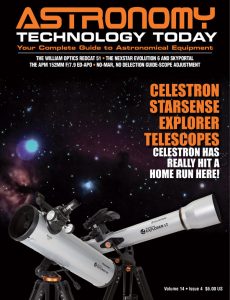The editors of College Rank have put together a list of the top 35 College Astronomy Observatories.
As noted by the editors who conducted the list, “Designed to combine the classic observatory with 21st century design and cutting-edge technology, these facilities are helping to create an entirely new generation of leading astronomers looking to the heavens for new theories, confirmation of older theories, and experiences that will define human interaction with space for decades to come. These 35 college observatories are proof that our facilities, our technology, and even our communities, are the key to better education and a more thorough understanding of what lies beyond earth’s grasp.”

The No. 1 ranking for College Astronomy Observatories went to Haleakala Observatory at the University of Hawaii. Others among the top 35 include the University of Texas McDonald Observatory, Harvard-Smithsonian Center for Astrophysics at Harvard University, Palomar Observatory at California Institute of Technology and Haystack Observatory at Massachusetts Institute of Technology.
College Rank used the following methodology to rank the College Astronomy Observatories considering the following data points including the number, size, and technology of telescopes available. Data on telescopes at each observatory was collected, and observatories were given a score based on the number of telescopes on site and the largest and average sizes of the telescopes, with additional points being scored for diverse or specialized technologies.
Because altitude can significantly decrease atmospheric noise, observatories were also scored based on elevation above sea level, with all observatories receiving a normalized score, and some observatories receiving bonus points for elevation above 5000 feet.
Using data from Weatherspark.com, each observatory was given a Clear Skies rating, which is the average of the chance of clear skies annually, and the chances of clear skies on the historically most and historically least clear nights of the year.
Light pollution was also taken into consideration using data provided by the Earth Observation Group, a subset of the National Geophysical Data Center, each observatory was given a rating based on average amounts of light pollution
The four main criteria (Telescopes, Altitude, Weather and Light Pollution) were normalized to represent scores on a scale from 1-100 and then weighted equally. Bonus Points Bonus points ranging from 0-10 were given for noteworthy aspects of the observatory and related programs. The most common bonus was awarded to observatories listed on the National Register of Historic Places.
One of the cool things for the amateur astronomy community is that virtually all of these College Astronomy Observatories offer public tours and observing opportunities. For example, the McDonald Observatory hosts a number of public opportunities as well as being an integral part of the Texas Star Party.
So if you plan on any traveling this year near one of these facilities, you might want to schedule time to check them out.
 And to make it easier for you to get the most extensive news, articles and reviews that are only available in the magazine pages of Astronomy Technology Today, we are offering a 1 year magazine subscription for only $6! Or, for an even better deal, we are offering 2 years for only $9. Click here to get these deals which only will be available for a very limited time. You can also check out a free sample issue here.
And to make it easier for you to get the most extensive news, articles and reviews that are only available in the magazine pages of Astronomy Technology Today, we are offering a 1 year magazine subscription for only $6! Or, for an even better deal, we are offering 2 years for only $9. Click here to get these deals which only will be available for a very limited time. You can also check out a free sample issue here.

